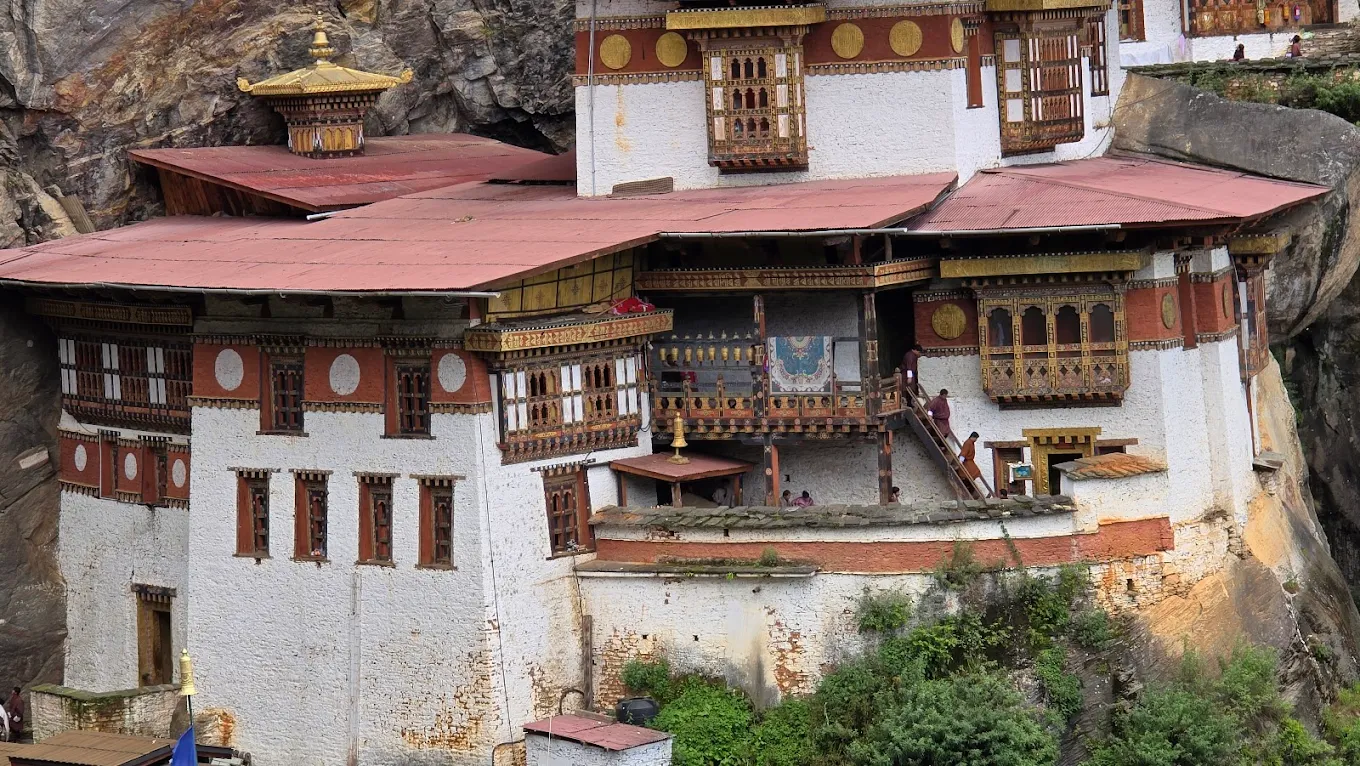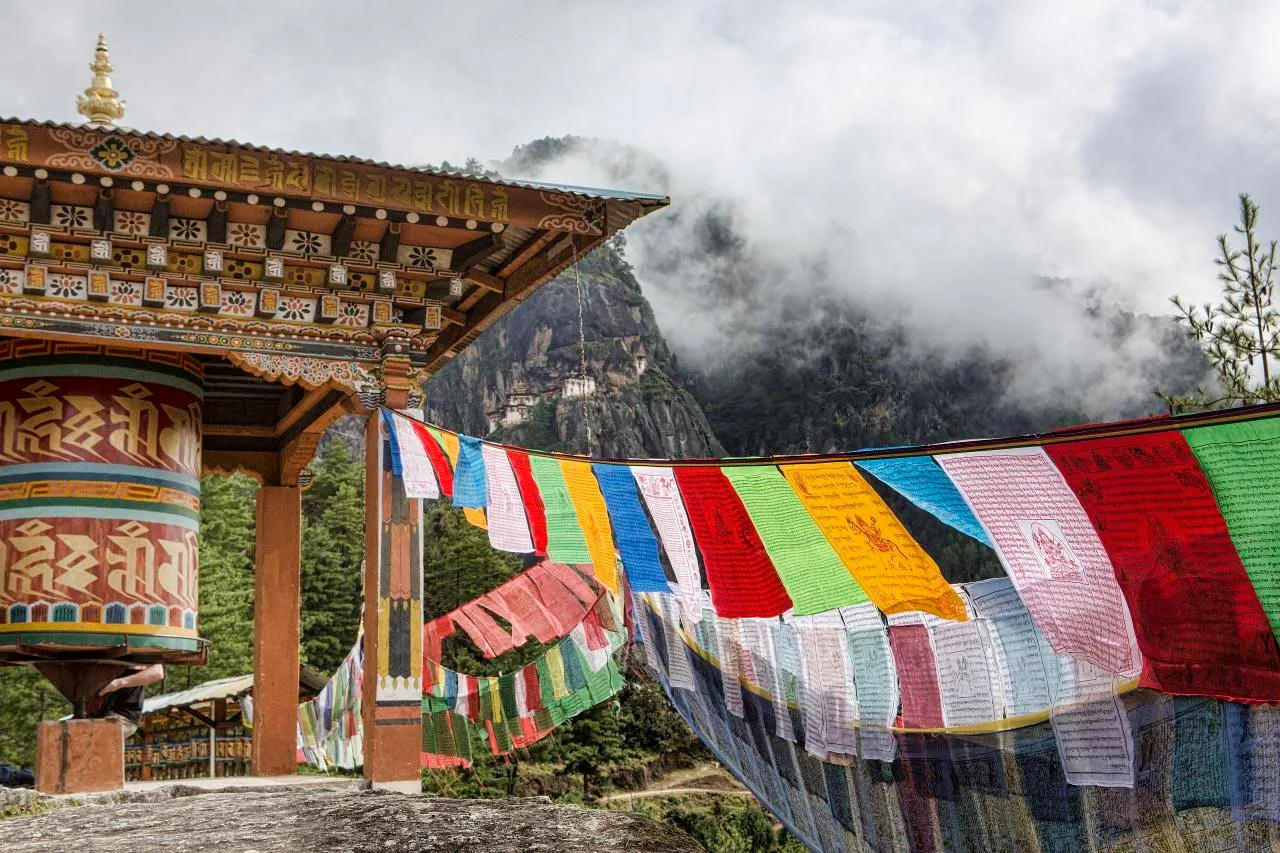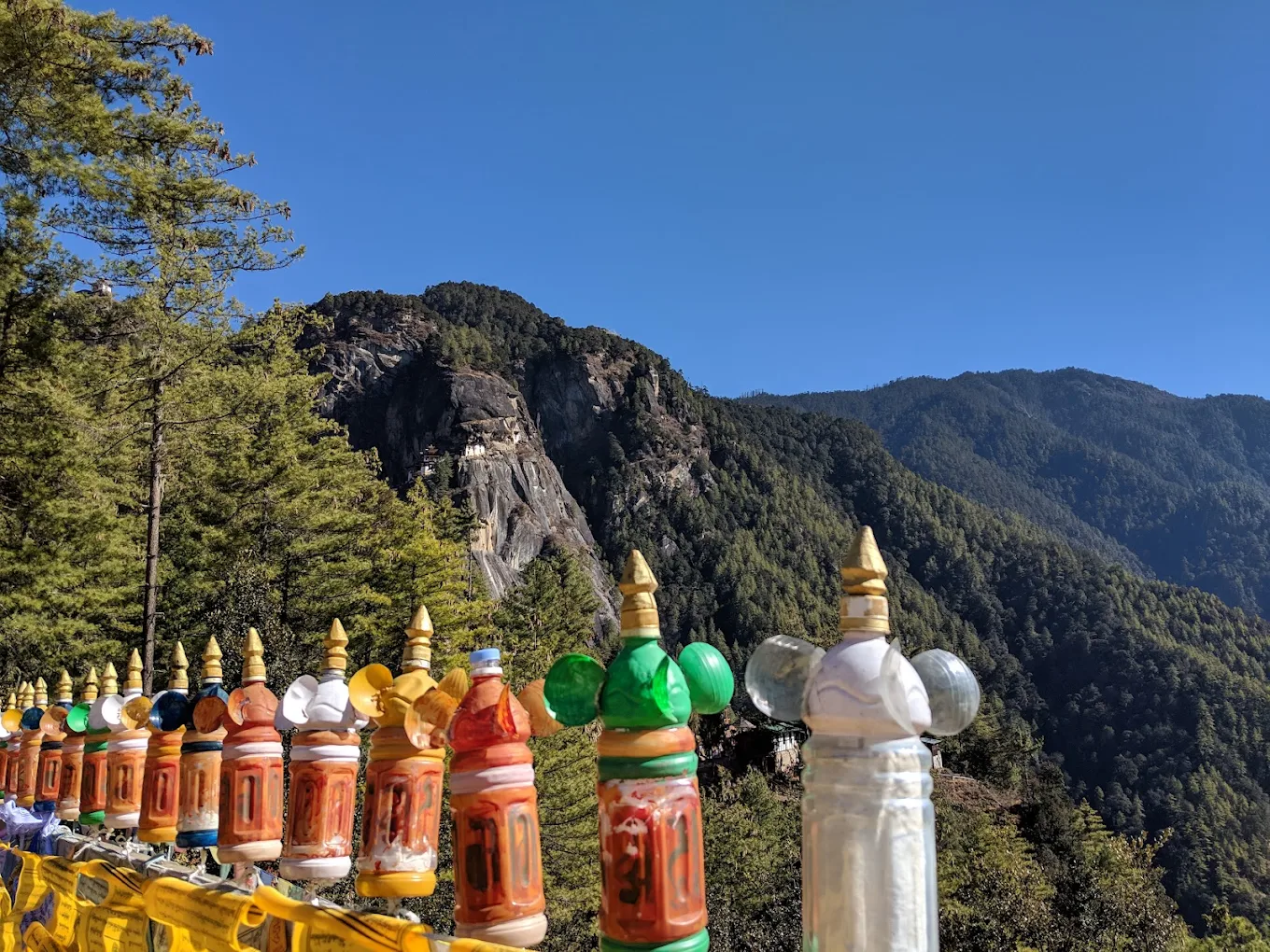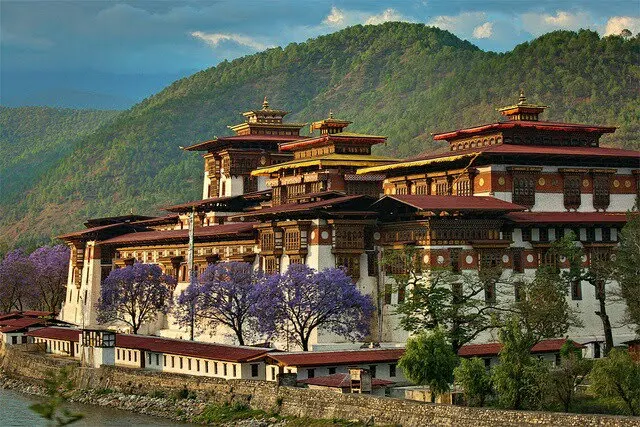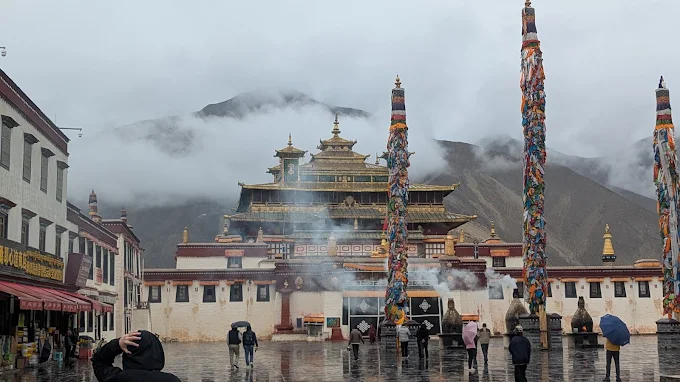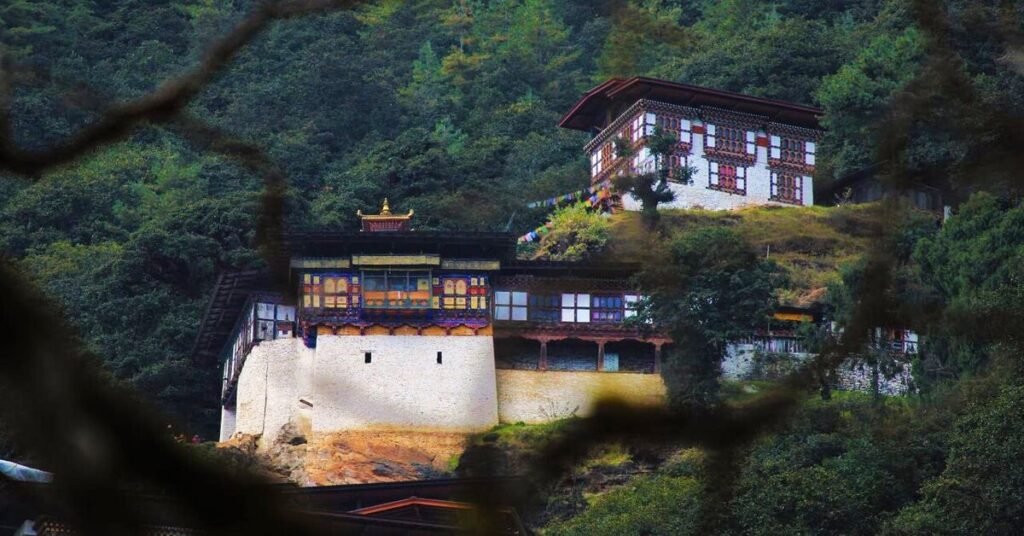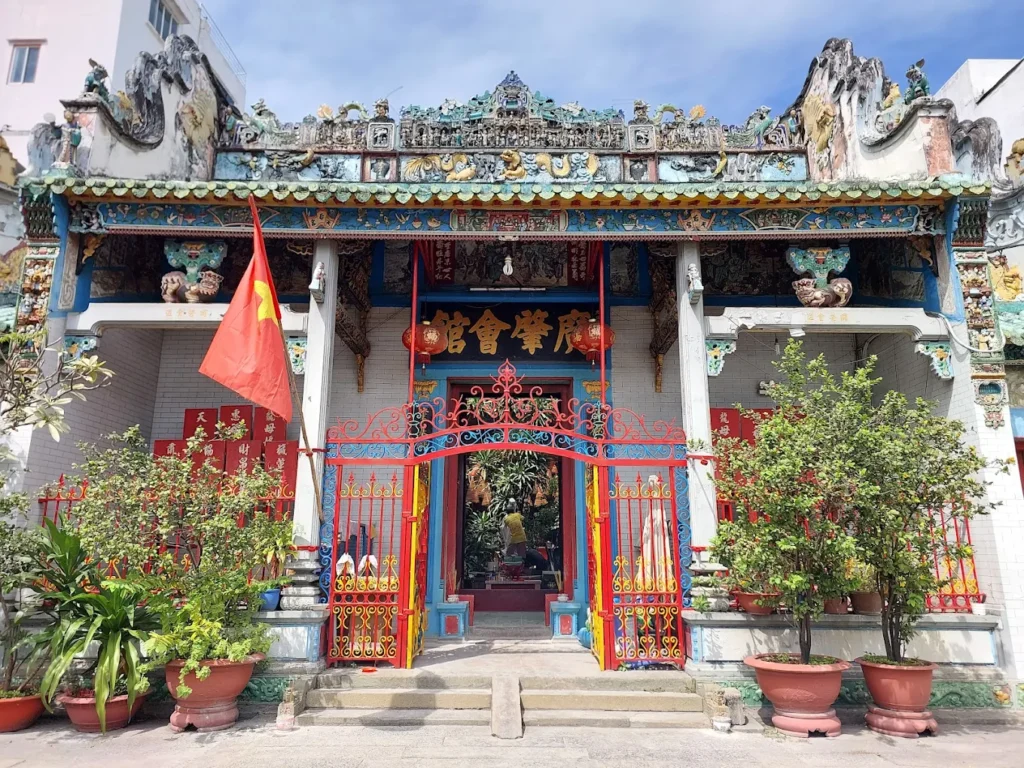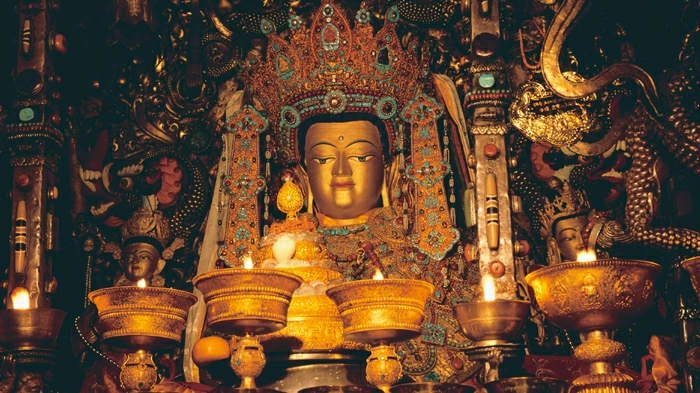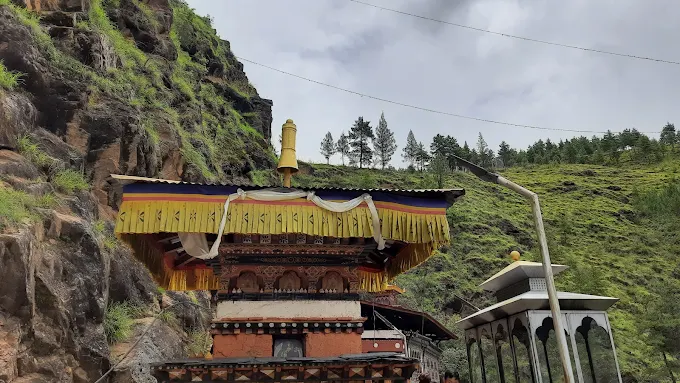Paro Taktsang: The Sacred Nest of the Tiger
Overview and Significance
Essence of Paro Taktsang
Clinging to a cliff at 3,120 meters in Bhutan’s Paro Valley, Paro Taktsang, or the Tiger’s Nest Monastery, is a marvel of faith and defiance. Its whitewashed walls, adorned with golden roofs, seem to float against the rugged mountainside, embodying spiritual audacity. Revered as Bhutan’s holiest site, it marks the spot where Guru Rinpoche, the “Second Buddha,” meditated in a cave, taming malevolent spirits. For pilgrims and travelers, Taktsang is a beacon of enlightenment, its treacherous ascent a metaphor for the soul’s journey.
- Defining Trait: A cliffside sanctuary tied to Guru Rinpoche’s mythical tiger flight.
- Spiritual Core: Central to Bhutanese Buddhism, symbolizing the triumph of wisdom.
- Global Allure: A bucket-list trek for those seeking awe and introspection.
The path to Taktsang winds through pine forests, past prayer flags fluttering in the Himalayan breeze. Each step deepens the sense of reverence, as the monastery’s silhouette emerges against the sky. Unlike urban temples, its isolation amplifies its mystique, offering solitude amid raw natural power. For Bhutanese, it’s a living link to their spiritual heritage; for outsiders, it’s a portal to a world where faith shapes mountains.
Historical Evolution
Paro Taktsang’s story begins in the 8th century, when Guru Rinpoche, also known as Padmasambhava, arrived on a tigress’s back to subdue a local demon. His three-year meditation in a cave sanctified the site, planting the seeds of Tantric Buddhism in Bhutan. In 1692, Gyalse Tenzin Rabgye, the 4th Druk Desi, formalized the monastery, building shrines around the sacred caves. Over centuries, Taktsang evolved, its structures reflecting Bhutan’s architectural ingenuity.
- Key Milestones:
- 8th Century: Guru Rinpoche’s meditation establishes the site’s sanctity.
- 1692: Formal construction begins under Tenzin Rabgye’s patronage.
- 1998: A fire destroys much of the monastery, testing Bhutan’s resilience.
- 2005: Reconstruction restores Taktsang, blending tradition with modern safety.
The 1998 fire, sparked by a butter lamp, consumed ancient murals and relics, leaving Bhutan in mourning. Yet, the nation rallied, with artisans sourcing local timber and monks reconsecrating the site. Legends tell of sacred treasures hidden in caves, untouched by flames, fueling tales of divine protection. The rebuilt Taktsang, completed in 2005, stands as a testament to Bhutan’s devotion, its history a cycle of creation, loss, and rebirth.
Cultural Impact
Paro Taktsang is Bhutan’s spiritual heartbeat, anchoring the nation’s Buddhist identity. It embodies the Gross National Happiness philosophy, prioritizing spiritual wealth over material gain. For locals, it’s a pilgrimage site where vows are made, sins cleansed, and blessings sought. Its image graces Bhutanese art, currency, and festivals, a constant reminder of faith’s enduring power.
- Local Role: A pilgrimage destination for spiritual renewal.
- National Symbol: Represents Bhutan’s Buddhist values and cultural preservation.
- Global Influence: Inspires Buddhist scholars and travelers exploring Vajrayana traditions.
Globally, Taktsang’s cliffside silhouette captivates, appearing in documentaries, travel blogs, and spiritual literature. Often compared to Machu Picchu, it blends natural and human-made wonder, drawing adventurers and scholars alike. Its inaccessibility enhances its allure, challenging visitors to earn their encounter. Bhutan’s cautious tourism policy ensures Taktsang remains a sacred space, balancing global interest with cultural integrity.
Signature Legacy
The legend of Guru Rinpoche’s tiger flight defines Taktsang’s legacy. As Dorje Drolo, a fierce manifestation, he rode a tigress to tame the valley’s spirits. The cave, Tholu Phuk, remains the monastery’s spiritual core, accessible only to pilgrims on rare occasions. This myth infuses Taktsang with an otherworldly energy, felt in the wind-whipped prayer flags and echoing chants.
- Mythical Allure: The tiger narrative blends history with mysticism.
- Sacred Caves: Tholu Phuk and Pel Phuk house relics and Guru Rinpoche’s imprints.
- Pilgrim Stories: Locals recount visions and miracles tied to the site.
Anecdotes tell of pilgrims finding clarity upon reaching Taktsang. One 18th-century monk reportedly fasted in a cave for months, emerging with prophecies that guided Bhutan’s rulers. Such stories cement Taktsang’s status as a place where the mortal and divine converge, its legacy etched into Bhutan’s soul.
Community and Global Reach
Taktsang binds Bhutanese communities, from farmers offering butter lamps to monks maintaining rituals. During festivals like Paro Tshechu, pilgrims flock to honor Guru Rinpoche, their offerings sustaining the monastery. Globally, it attracts Buddhist practitioners from Tibet, India, and beyond, drawn to its Tantric heritage.
- Community Engagement: Locals donate food, funds, and labor.
- Monastic Role: Monks guide rituals and mentor novices.
- Global Pilgrims: Attracts Buddhists and scholars worldwide.
The Bhutanese diaspora carries Taktsang’s image in amulets and prayers. International conservation groups advocate for its preservation, while travel platforms amplify its fame. Bhutan regulates visitor numbers to protect Taktsang’s sanctity, ensuring it remains a living temple, not a tourist spectacle.
Architectural Features
Distinctive Design
Paro Taktsang’s architecture defies its perilous perch, blending Bhutanese tradition with the mountain’s raw geometry. Its four main temples, connected by narrow paths and staircases, hug the cliff, their whitewashed walls contrasting the golden roofs. Built into the granite face, the complex uses timber beams anchored deep into rock, a feat of 17th-century engineering. The design reflects Dzong architecture, adapted for spiritual seclusion rather than defense.
- Cliffside Integration: Structures meld with the mountain, symbolizing harmony.
- Color Palette: White walls and gold roofs evoke purity and divinity.
- Compact Layout: Temples are small, prioritizing sacred function over grandeur.
The monastery’s layout centers on the sacred caves, with temples radiating outward. Prayer wheels and chortens (stupas) line the paths, their rhythmic spins echoing Buddhist mantras. Unlike urban dzongs, Taktsang’s scale is intimate, its design amplifying the cliff’s spiritual weight. The 2005 reconstruction preserved this aesthetic, using traditional methods while adding fire-resistant materials.
Signature Structures
The heart of Taktsang is the Guru Sungjon Temple, housing the Tholu Phuk cave where Guru Rinpoche meditated. Its gilded altar, adorned with butter lamps, holds a statue of Dorje Drolo, fierce yet serene. The Pel Phuk cave, another key shrine, features rock imprints believed to be Guru Rinpoche’s handprints. Each temple, though small, is richly decorated, with murals depicting Tantric deities.
- Guru Sungjon Temple: The spiritual core, centered on Tholu Phuk.
- Pel Phuk Shrine: Houses sacred imprints and relics.
- Secondary Temples: Include shrines to Tara and other deities.
Balconies offer vertiginous views of the Paro Valley, their wooden railings carved with lotus motifs. Stone staircases, worn by centuries of pilgrims, connect the temples, their uneven steps a reminder of the site’s age. The 1998 fire spared some original beams, now displayed in a small museum within the complex, linking past and present.
Artisanal Mastery
Taktsang’s craftsmanship reflects Bhutan’s reverence for sacred art. Murals, painted with mineral pigments, depict Guru Rinpoche’s eight manifestations, their vibrant hues glowing in dim interiors. Thangkas (scroll paintings) hang in shrines, their silk frames embroidered by local artisans. Wooden altars, carved with cloud and dragon motifs, showcase Himalayan woodworking.
- Murals: Illustrate Tantric narratives with vivid reds, blues, and golds.
- Thangkas: Portable art, used in rituals, crafted with precision.
- Woodwork: Intricate carvings symbolize cosmic order.
The 2005 reconstruction revived these crafts, with artisans trained in traditional techniques. Pigments were sourced from Himalayan minerals, and timber was hand-cut from local forests. The golden roofs, made of copper and gold leaf, were forged by metalsmiths in Paro, their work a prayer in itself. This dedication ensures Taktsang’s visual splendor endures.
Hidden Architectural Gems
Lesser-known features add depth to Taktsang’s allure. A small meditation hut, perched above the main complex, offers monks solitude, its walls etched with mantras. Prayer wheels, powered by a nearby stream, spin ceaselessly, their bronze surfaces polished by pilgrims’ hands. A rock formation, shaped like a tiger’s head, is revered as a natural relic of Guru Rinpoche’s tigress.
- Meditation Hut: A secluded retreat for monks, rarely seen by visitors.
- Water-Powered Wheels: Blend engineering with spirituality.
- Tiger Rock: A natural formation tied to the monastery’s myth.
These elements, often overlooked, enrich the experience. The hut’s isolation mirrors Taktsang’s ethos of detachment, while the prayer wheels’ hum creates a meditative soundscape. The tiger rock, though subtle, draws quiet reverence from pilgrims, who leave offerings of incense at its base.
Preservation and Evolution
Preserving Taktsang is a labor of love and logistics. The 1998 fire exposed vulnerabilities, prompting Bhutan to reinforce the cliffside foundations with steel anchors. Artisans train for years to maintain murals, using ancient recipes for pigments. Monsoon rains pose ongoing threats, requiring constant repairs to roofs and drainage systems.
- Post-Fire Rebuild: Combined traditional crafts with modern safety.
- Artisan Training: Ensures skills like thangka painting endure.
- Environmental Challenges: Monsoons and altitude test structural integrity.
Bhutan’s government, with UNESCO support, monitors Taktsang’s condition, balancing preservation with accessibility. Solar panels, discreetly installed, power minimal lighting, reducing reliance on butter lamps. These efforts ensure Taktsang remains a living monument, its architecture a bridge between past and future.
Rituals and Practices
Sacred Daily Rites
Each dawn, Taktsang’s monks begin with chants, their voices resonating in the cliffside temples. Butter lamps, fueled by yak butter, cast a golden glow on Guru Rinpoche’s statue, their flickering light a symbol of wisdom dispelling ignorance. Monks offer water bowls and incense, purifying the shrines as pilgrims arrive.
- Morning Chants: Recite mantras like “Om Mani Padme Hum.”
- Butter Lamps: Lit daily, symbolizing enlightenment.
- Offerings: Water and incense cleanse sacred spaces.
The sensory experience—smoke curling upward, chants echoing off stone—creates an immersive atmosphere. Unlike urban temples, Taktsang’s rituals feel intimate, the cliff’s silence amplifying each sound. Visitors, though restricted from inner shrines, feel the rituals’ weight through the monks’ devotion.
Unique Spiritual Practices
Taktsang’s practices center on Guru Rinpoche’s legacy. Pilgrims circumambulate the complex, spinning prayer wheels to accrue merit. Some offer khatas (silk scarves) at altars, seeking blessings for health or safe journeys. On rare occasions, monks open the Tholu Phuk cave, allowing pilgrims to meditate in Guru Rinpoche’s presence.
- Circumambulation: Walking clockwise around temples, a meditative act.
- Khata Offerings: Scarves symbolize purity and devotion.
- Cave Meditation: A rare privilege, deeply transformative.
These practices, rooted in Vajrayana Buddhism, emphasize direct experience of the divine. Pilgrims describe a palpable energy in the caves, where silence feels alive. For Bhutanese, these acts reinforce their bond with Taktsang, a place where prayers are believed to carry extra weight.
Vibrant Festival Traditions
Taktsang shines during Paro Tshechu, a five-day festival honoring Guru Rinpoche. Monks perform cham dances, their masked figures reenacting Tantric myths. Pilgrims, dressed in colorful ghos and kiras, offer butter sculptures and rice, creating a communal celebration. The festival, held in spring, draws thousands, transforming the quiet cliff into a vibrant hub.
- Cham Dances: Masked performances depict spiritual battles.
- Offerings: Butter sculptures and rice symbolize abundance.
- Community Role: Unites locals and pilgrims in shared devotion.
Other festivals, like Losar (Bhutanese New Year), see smaller rituals, with monks chanting for prosperity. Visitors during Tshechu witness Taktsang’s dual nature: a solitary retreat and a communal heart. The dances’ rhythmic drums and swirling colors contrast the cliff’s stark beauty, creating unforgettable memories.
Visitor Engagement
Visitors can participate in limited rituals, enhancing their experience. Lighting butter lamps, available for a small donation, allows tourists to join locals in prayer. Spinning prayer wheels along the path offers a tactile connection to Buddhist practice. Guides often share mantras, enabling visitors to chant softly as they walk.
- Butter Lamps: A simple, accessible act of devotion.
- Prayer Wheels: Spinning wheels accrue spiritual merit.
- Guided Mantras: Chanting fosters a deeper connection.
These acts bridge cultural gaps, letting outsiders feel Taktsang’s spiritual pulse. Photography inside temples is prohibited, preserving the sanctity, but visitors can sketch or journal, capturing the experience. The act of reaching Taktsang, after a grueling trek, feels like a ritual itself, rewarding perseverance with serenity.
Monastic and Community Roles
Taktsang’s monks, often young novices, maintain its rituals while studying Tantric texts. They rise before dawn, tending shrines and guiding pilgrims. The local community supports them, donating food and funds, especially during festivals. This symbiosis ensures Taktsang’s vitality, with villagers seeing it as their sacred duty.
- Monastic Duties: Chanting, shrine upkeep, and mentoring novices.
- Community Support: Donations sustain the monastery’s needs.
- Cultural Continuity: Monks and locals preserve Bhutanese traditions.
Monks also bless amulets, which pilgrims carry for protection. During Tshechu, they lead processions, linking Taktsang to nearby villages. This interplay of monastic and lay devotion makes Taktsang a living ecosystem, its rituals sustained by collective faith.
Visitor Information
Navigating to Paro Taktsang
Paro Taktsang lies 10 km from Paro town, Bhutan’s gateway, accessible only by a 2-3 hour trek. The trailhead, at 2,600 meters, is a 20-minute drive from Paro’s airport. Landmarks include a prayer wheel at the parking lot and a small café for snacks. The path ascends through pine forests, with prayer flags marking the way.
- Starting Point: Trailhead near Ramthangka village.
- Landmarks: Prayer wheels and a midway viewpoint with Taktsang’s silhouette.
- Route: Steep but well-maintained, with rest stops.
Taxis from Paro cost ~$10, or join a guided tour including transport. The trek’s altitude demands acclimatization; arrive in Paro a day early. Guides, mandatory for tourists, enhance navigation and share legends, making the journey immersive.
Visiting Hours and Etiquette
Taktsang is open daily from 8 AM to 1 PM and 2 PM to 5 PM, closing during lunch for prayers. Early visits (8-9 AM) offer quiet reflection and cooler weather. Entry requires a permit, included in Bhutan’s $100 daily tourist fee, checked at the trailhead.
- Hours: 8 AM–1 PM, 2 PM–5 PM; extended during festivals.
- Permits: Arranged via tour operators, no extra cost.
- Best Time: Spring (March-May) or autumn (September-November) for clear skies.
Etiquette is strict: remove shoes and hats before entering temples, dress modestly (long sleeves, no shorts), and avoid pointing at statues. Photography is banned inside shrines but allowed on balconies. Speak softly and follow guides’ instructions to respect monks’ rituals.
Accessibility and Safety
The trek to Taktsang is strenuous, with a 900-meter elevation gain over rocky terrain. It’s challenging for those with mobility issues, as there are no elevators or wheelchair paths. Mules, available at the trailhead (~$20), carry visitors halfway, easing the ascent for some.
- Mobility Challenges: Steep paths, uneven steps; mules assist partially.
- Health Risks: Altitude sickness; hydrate and pace yourself.
- Safety Tips: Wear sturdy shoes, carry water, and use trekking poles.
Safety concerns include loose rocks and monsoon mud (June-August). Guides carry first-aid kits, and a small clinic operates in Paro. Avoid straying from the path, as cliffs are unforgiving. Solo trekking is prohibited, ensuring group safety.
Amenities and Surroundings
The trailhead offers a café with tea, snacks, and restrooms. Midway, a canteen serves rice and momos, with benches overlooking Taktsang. The monastery has no facilities, so carry water and snacks. Paro town, a 20-minute drive, offers hotels, restaurants, and markets.
- Trail Amenities: Café and canteen provide basic food and rest.
- Paro Town: Hotels like Zhiwa Ling, plus local eateries serving ema datshi.
- Sensory Details: Pine-scented air, prayer flags’ rustle, distant monk chants.
Paro’s markets sell handicrafts and amulets, perfect for post-trek souvenirs. The valley’s rice fields and traditional houses create a serene backdrop, enhancing the journey. Evening strolls in Paro reveal starlit skies, a fitting end to a Taktsang visit.
Immersive Visitor Tips
To deepen your experience, start the trek at dawn, catching the sunrise over the valley. Pause at the midway viewpoint to sketch Taktsang’s silhouette, a meditative act. On balconies, listen for monks’ chants, letting the sound anchor you. Post-trek, visit Paro’s Rinpung Dzong to compare its grandeur with Taktsang’s intimacy.
- Dawn Trek: Sunrise views enhance the spiritual ambiance.
- Sketching: Capture Taktsang’s form without photography.
- Evening Paro: Explore markets for handmade prayer beads.
Engage your guide for stories about Guru Rinpoche, enriching the climb. Wear layers for fluctuating temperatures, and carry a journal to record impressions. These touches transform the visit into a personal pilgrimage, blending adventure with reverence.
